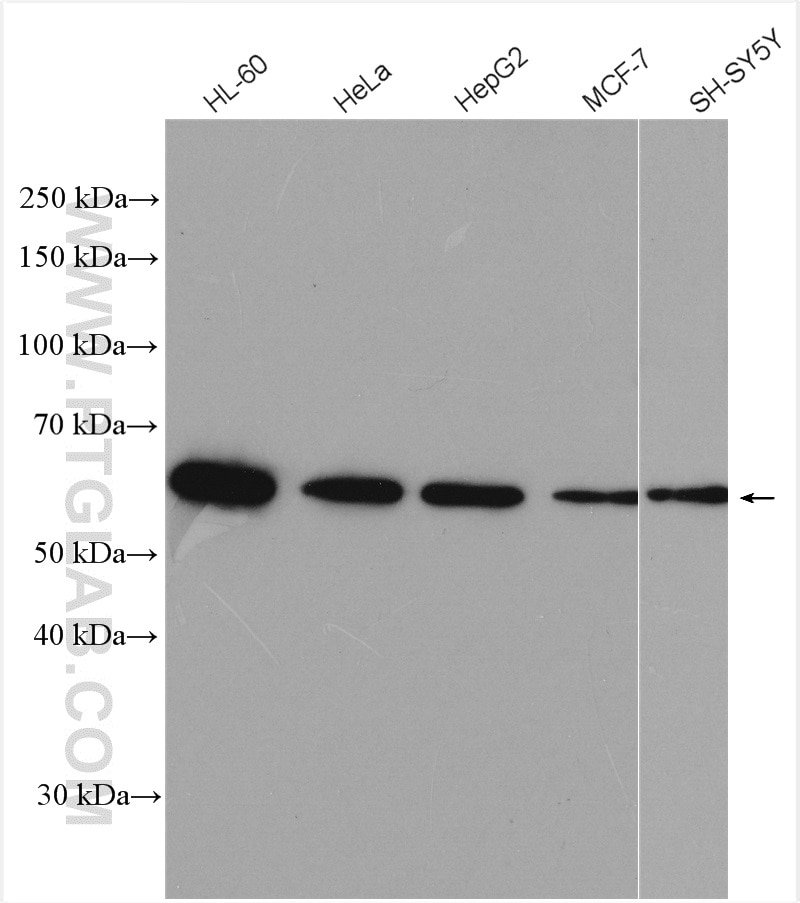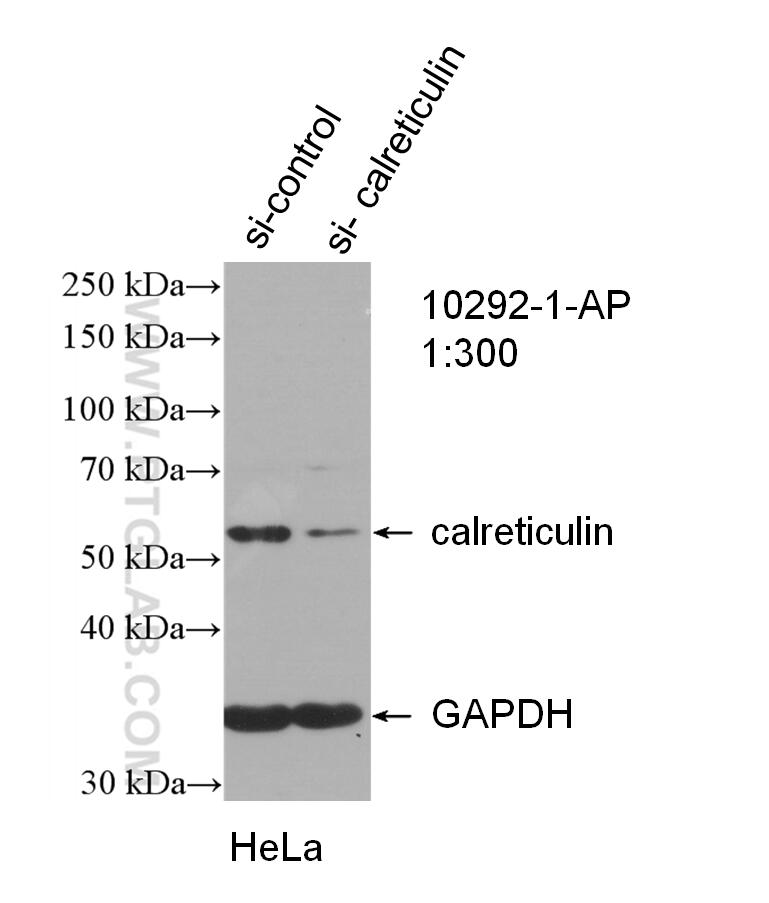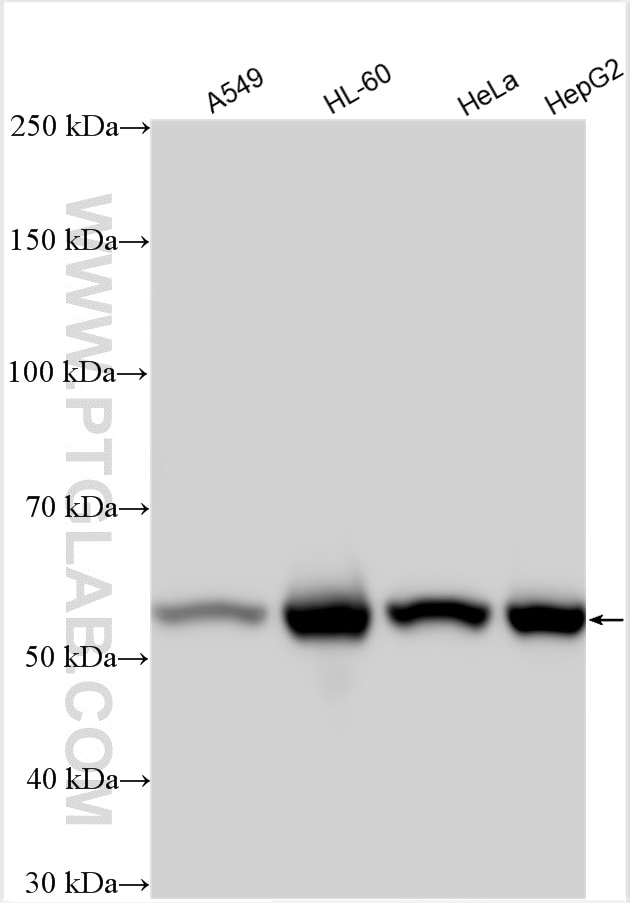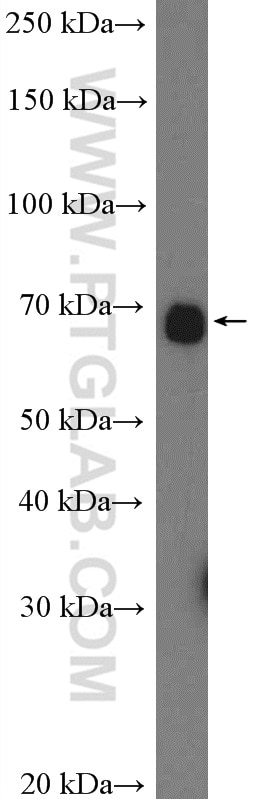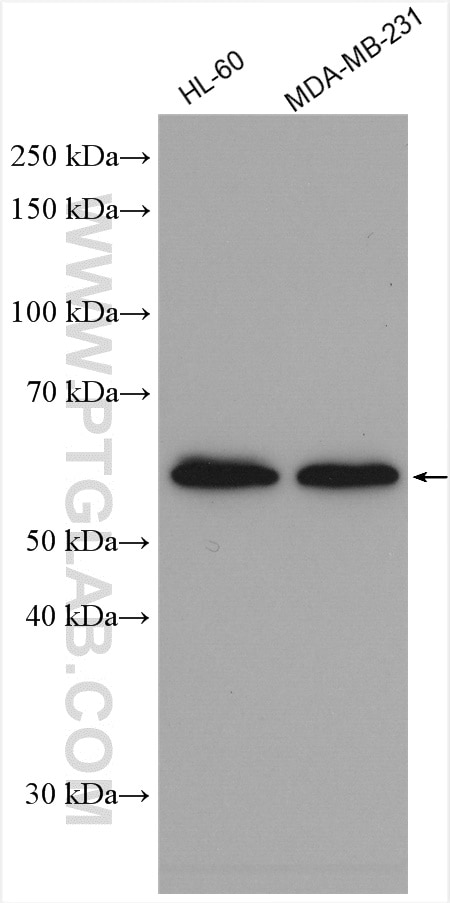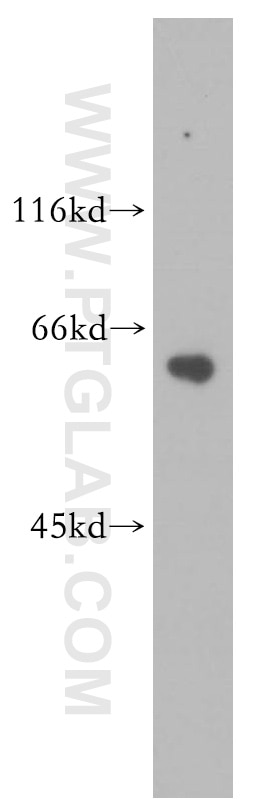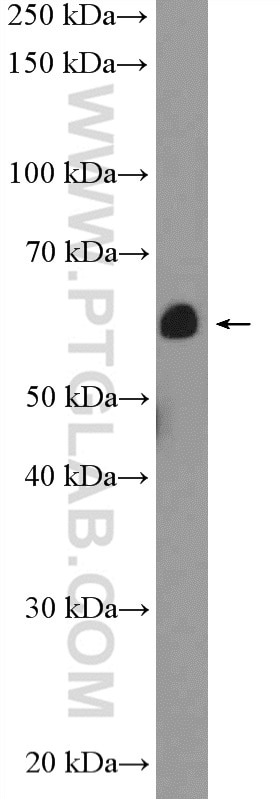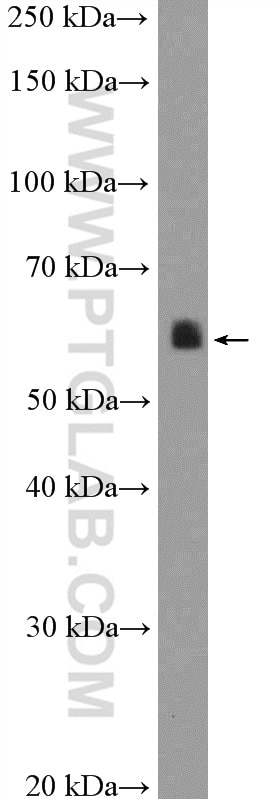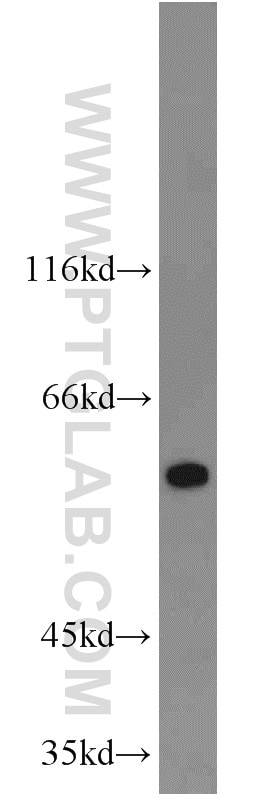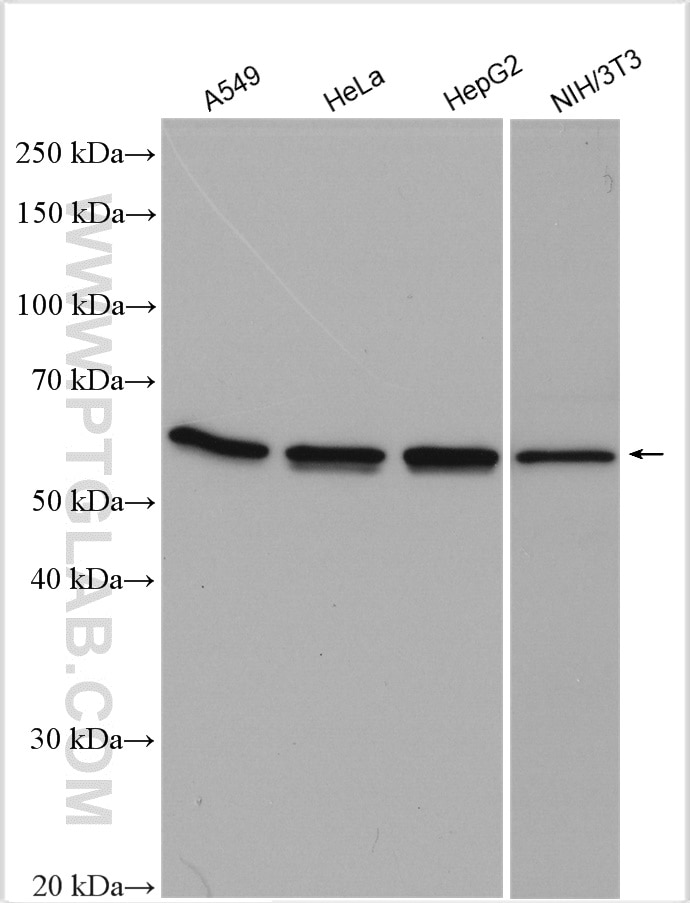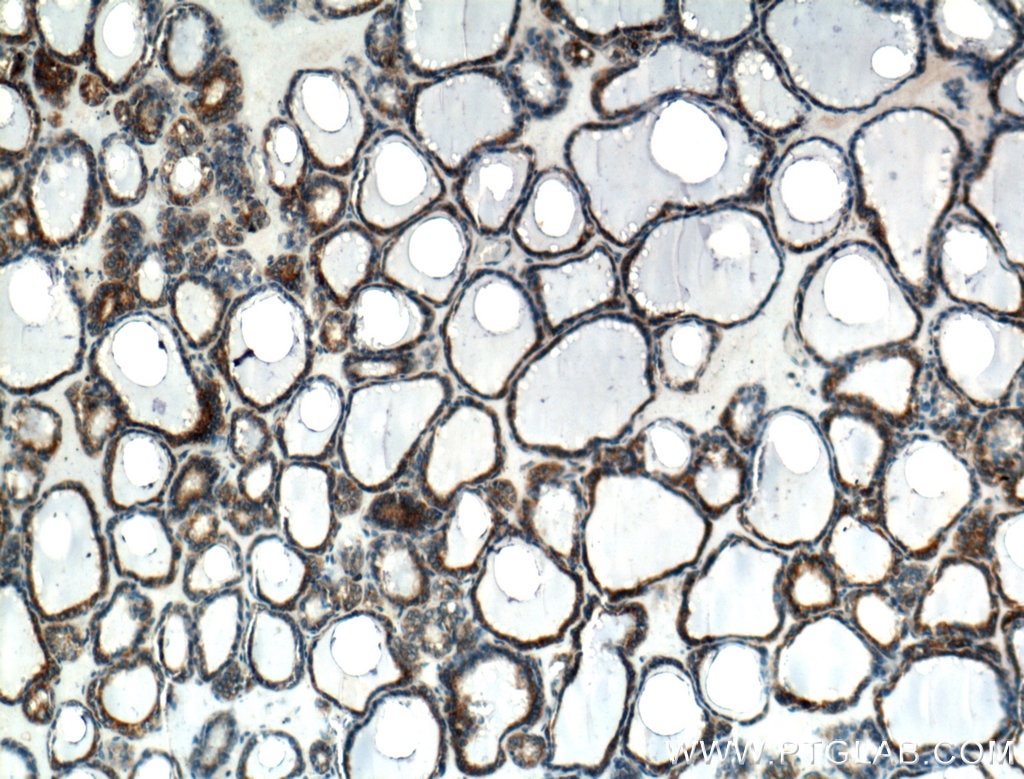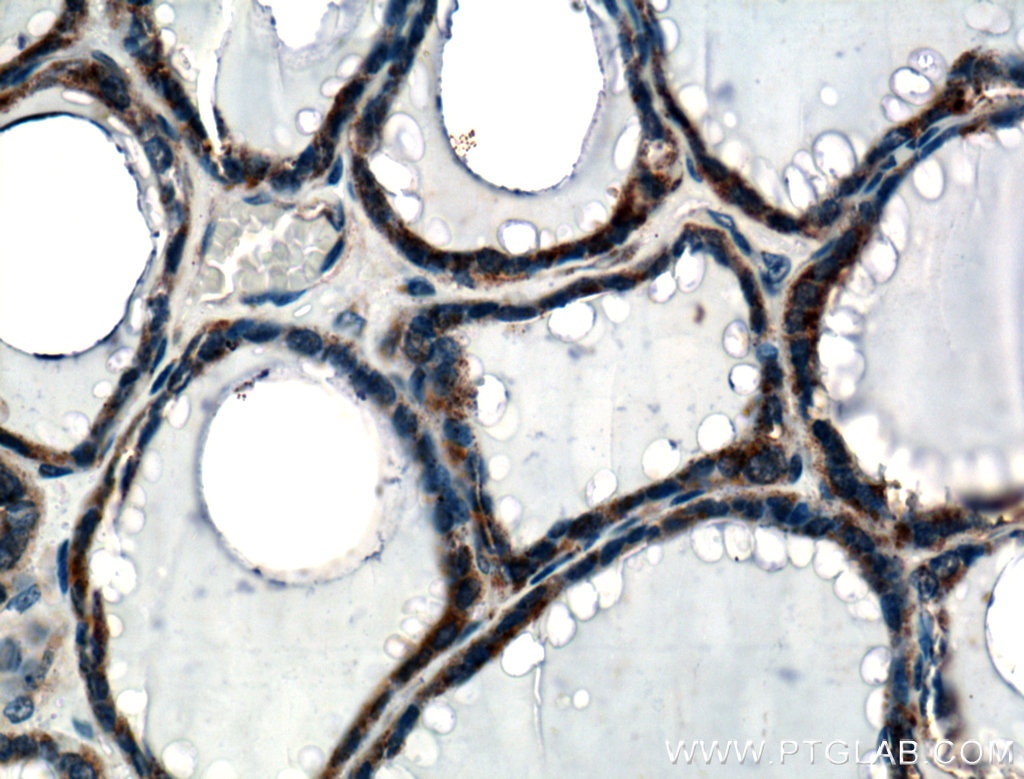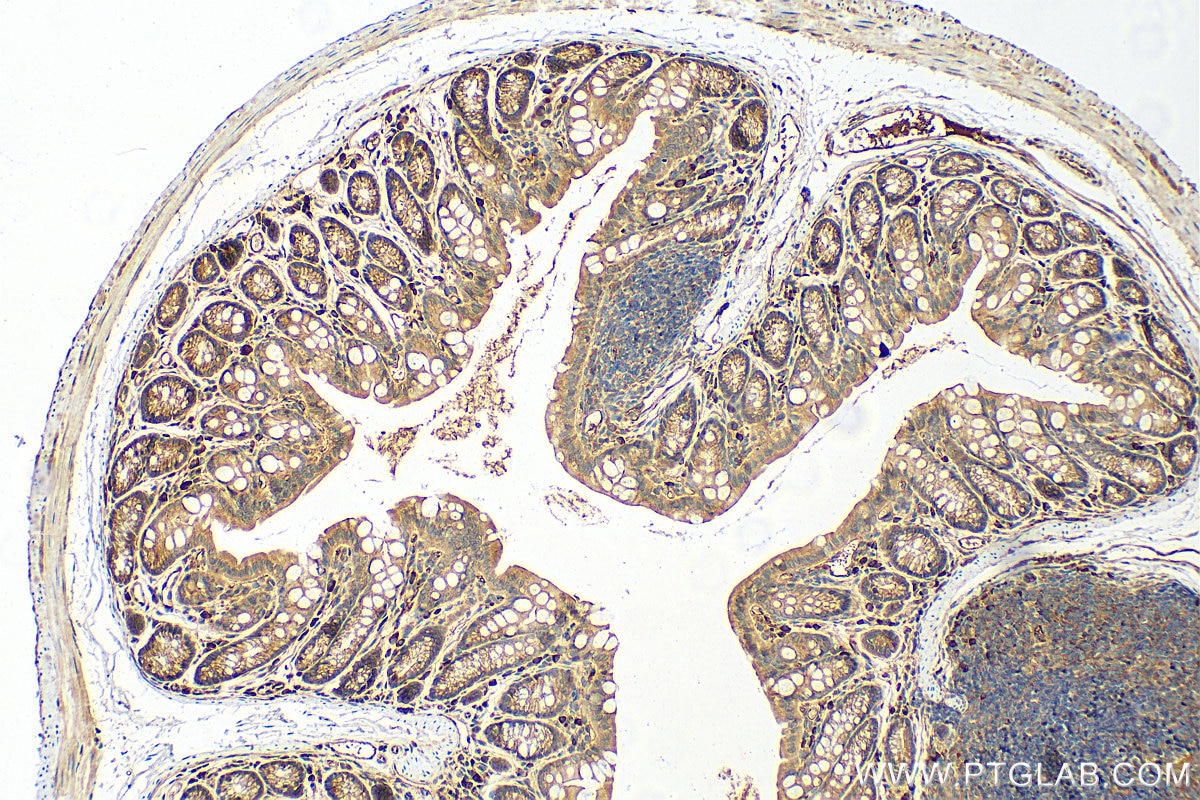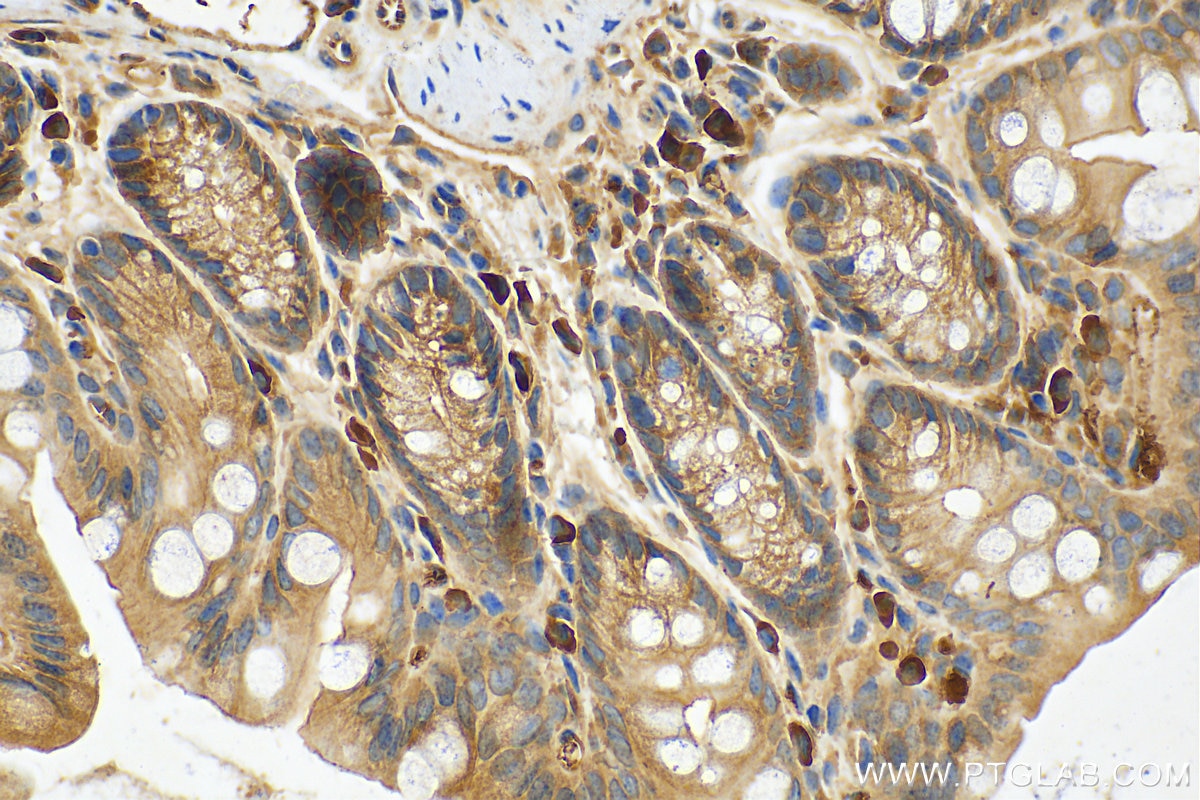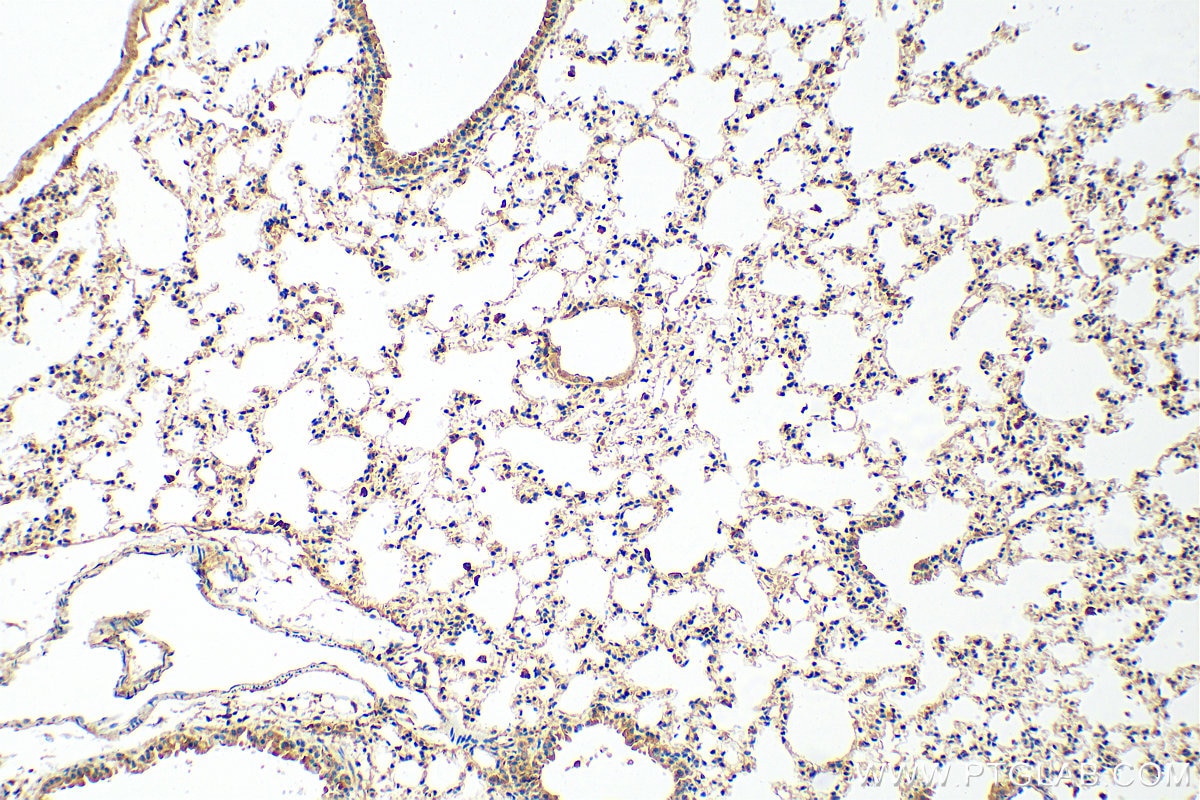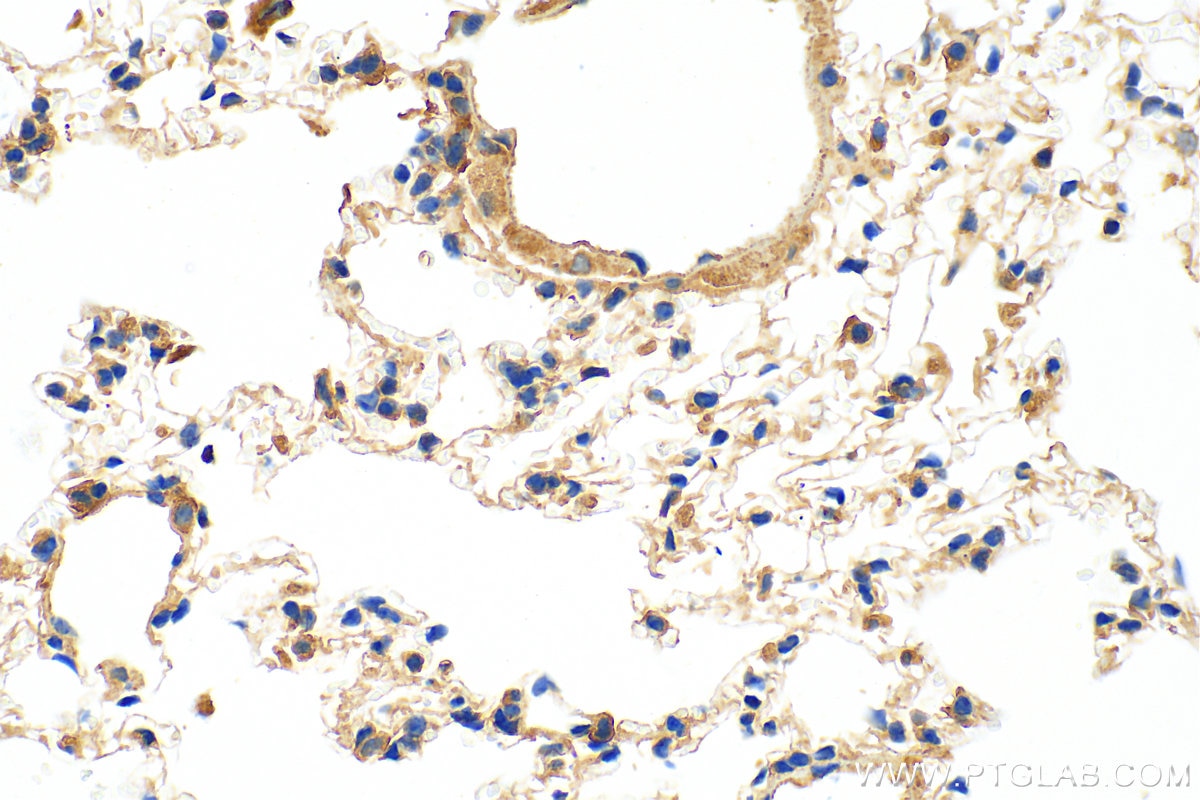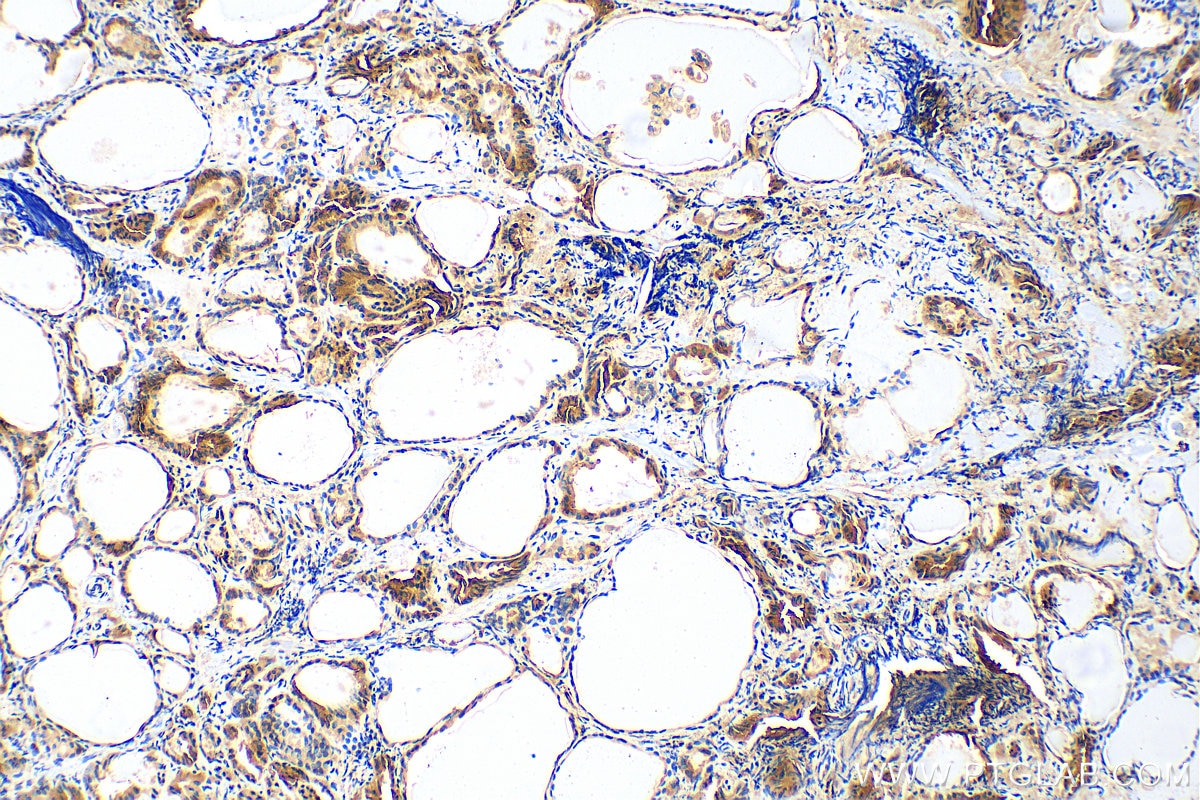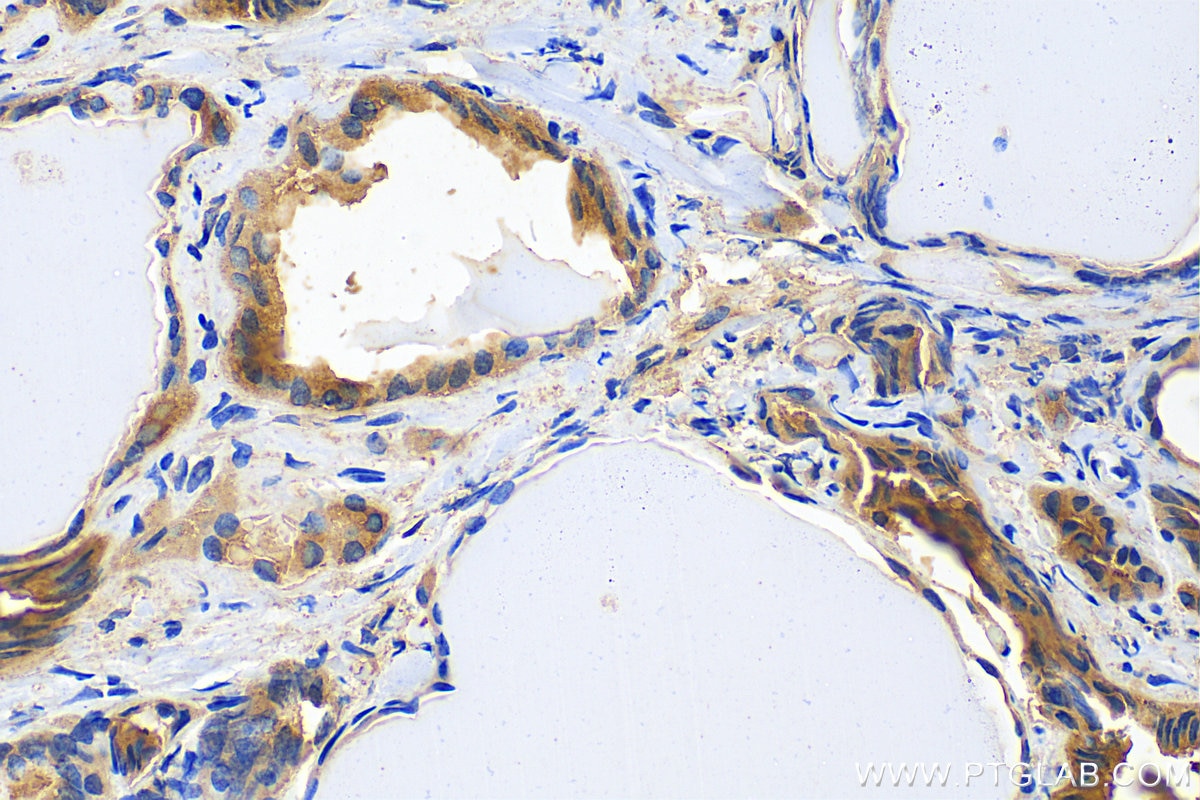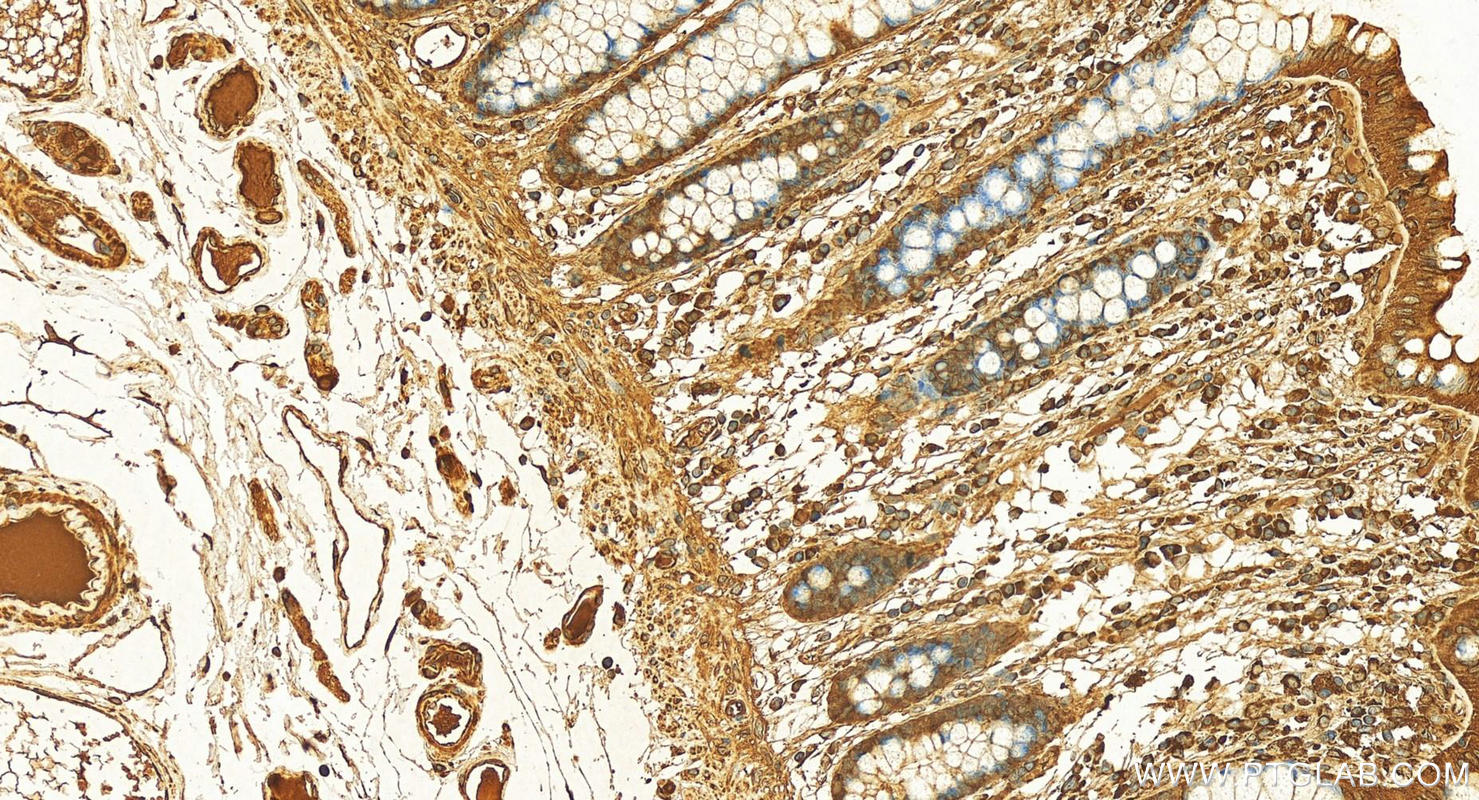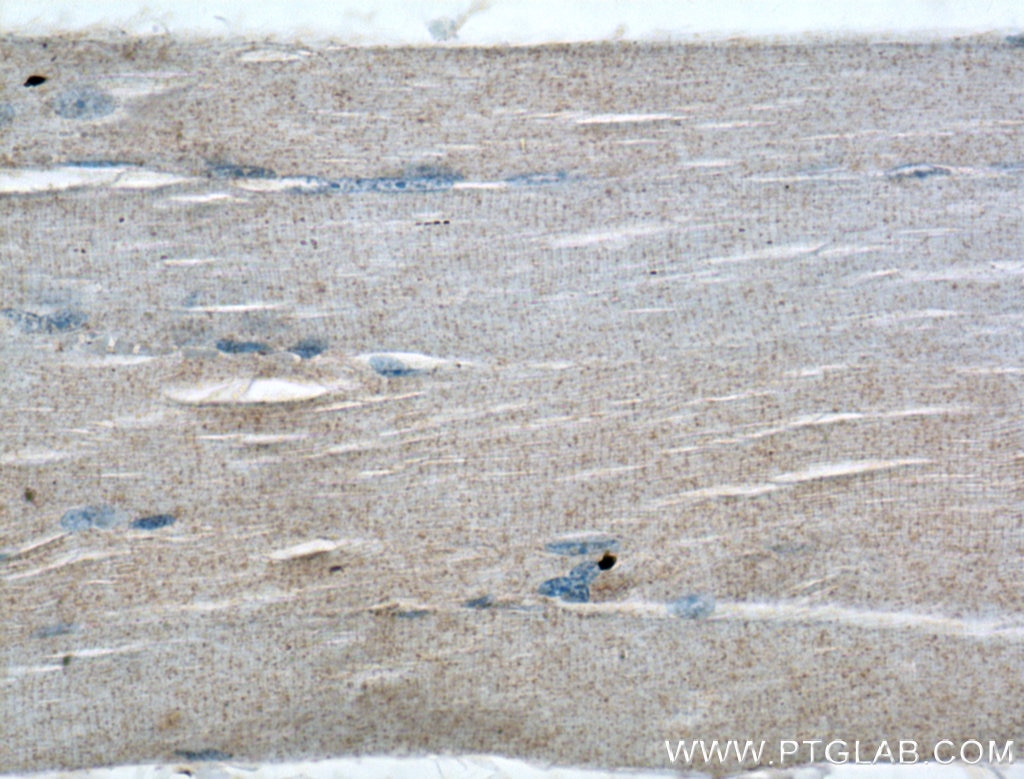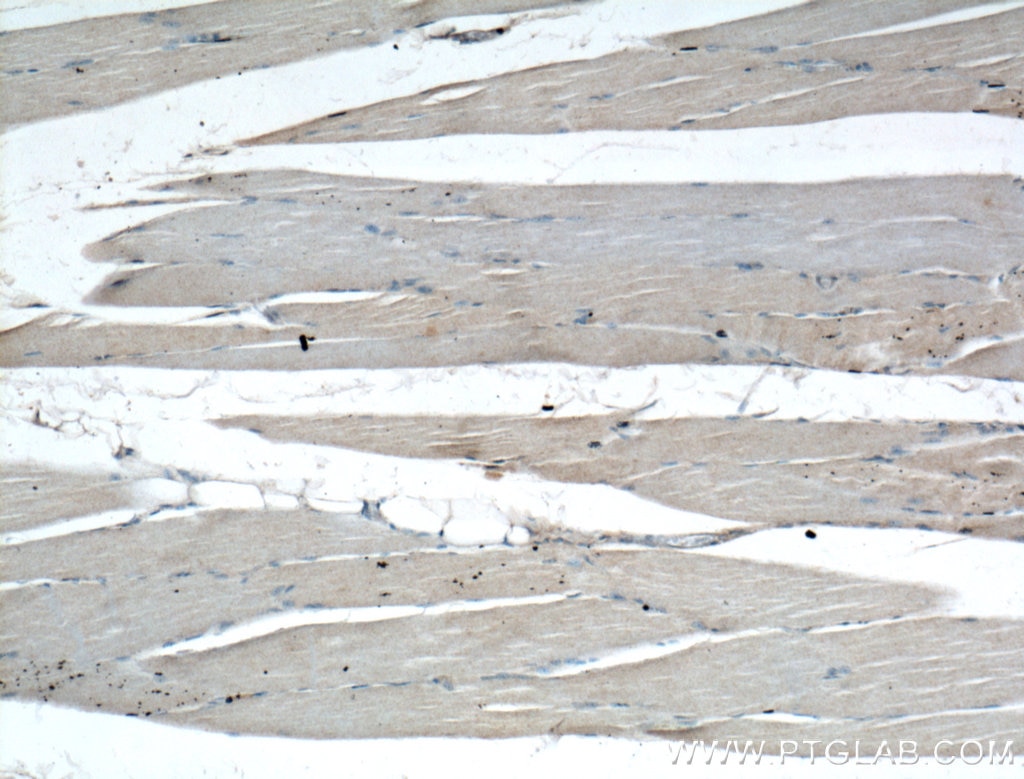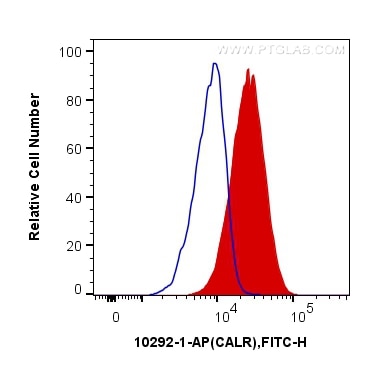- Phare
- Validé par KD/KO
Anticorps Polyclonal de lapin anti-calreticulin
calreticulin Polyclonal Antibody for WB, IHC, FC (Intra), ELISA
Hôte / Isotype
Lapin / IgG
Réactivité testée
Humain, rat, souris
Applications
WB, IHC, FC (Intra), CoIP, ELISA
Conjugaison
Non conjugué
N° de cat : 10292-1-AP
Synonymes
Galerie de données de validation
Applications testées
| Résultats positifs en WB | cellules HL-60, cellules A549, cellules COLO 320, cellules HeLa, cellules HepG2, cellules MCF-7, cellules NIH/3T3, cellules SH-SY5Y, tissu cérébral de rat, tissu cérébral de souris, tissu de muscle squelettique humain |
| Résultats positifs en IHC | tissu thyroïdien humain, tissu de cancer de la thyroïde humain, tissu de côlon de souris, tissu de muscle squelettique humain, tissu pulmonaire de souris il est suggéré de démasquer l'antigène avec un tampon de TE buffer pH 9.0; (*) À défaut, 'le démasquage de l'antigène peut être 'effectué avec un tampon citrate pH 6,0. |
| Résultats positifs en FC (Intra) | cellules Jurkat |
Dilution recommandée
| Application | Dilution |
|---|---|
| Western Blot (WB) | WB : 1:500-1:2000 |
| Immunohistochimie (IHC) | IHC : 1:50-1:500 |
| Flow Cytometry (FC) (INTRA) | FC (INTRA) : 0.40 ug per 10^6 cells in a 100 µl suspension |
| It is recommended that this reagent should be titrated in each testing system to obtain optimal results. | |
| Sample-dependent, check data in validation data gallery | |
Applications publiées
| KD/KO | See 5 publications below |
| WB | See 54 publications below |
| IHC | See 15 publications below |
| FC | See 3 publications below |
| CoIP | See 1 publications below |
Informations sur le produit
10292-1-AP cible calreticulin dans les applications de WB, IHC, FC (Intra), CoIP, ELISA et montre une réactivité avec des échantillons Humain, rat, souris
| Réactivité | Humain, rat, souris |
| Réactivité citée | rat, Humain, souris |
| Hôte / Isotype | Lapin / IgG |
| Clonalité | Polyclonal |
| Type | Anticorps |
| Immunogène | calreticulin Protéine recombinante Ag0325 |
| Nom complet | calreticulin |
| Masse moléculaire calculée | 60 kDa |
| Poids moléculaire observé | 55 kDa |
| Numéro d’acquisition GenBank | BC002500 |
| Symbole du gène | Calreticulin |
| Identification du gène (NCBI) | 811 |
| Conjugaison | Non conjugué |
| Forme | Liquide |
| Méthode de purification | Purification par affinité contre l'antigène |
| Tampon de stockage | PBS with 0.02% sodium azide and 50% glycerol |
| Conditions de stockage | Stocker à -20°C. Stable pendant un an après l'expédition. L'aliquotage n'est pas nécessaire pour le stockage à -20oC Les 20ul contiennent 0,1% de BSA. |
Informations générales
CALR,also named as grp60, ERp60, HACBP, CRP55, CRTC and Calregulin, belongs to the calreticulin family. It is a molecular calcium-binding chaperone promoting folding, oligomeric assembly and quality control in the ER via the calreticulin/calnexin cycle. CALR is a ER marker. It interacts transiently with almost all of the monoglucosylated glycoproteins that are synthesized in the ER. CALR interacts with the DNA-binding domain of NR3C1 and mediates its nuclear export. The MW of CALR migrates aberrantly at 55 kDa by SDS-PAGE. Some study provided that it's a new possibility for CRT-mediated tumor immune prevention and treatment.
Protocole
| Product Specific Protocols | |
|---|---|
| WB protocol for calreticulin antibody 10292-1-AP | Download protocol |
| IHC protocol for calreticulin antibody 10292-1-AP | Download protocol |
| Standard Protocols | |
|---|---|
| Click here to view our Standard Protocols |
Publications
| Species | Application | Title |
|---|---|---|
ACS Nano Nanointegrative In Situ Reprogramming of Tumor-Intrinsic Lipid Droplet Biogenesis for Low-Dose Radiation-Activated Ferroptosis Immunotherapy | ||
ACS Nano An Implantable Double-Layered Spherical Scaffold Depositing Gene and Cell Agents to Facilitate Collaborative Cancer Immunotherapy | ||
ACS Nano Starting the Engine and Releasing the Brakes of T-Cell Responses: A Biomimetic Dendritic Cell Nanoplatform for Improved Glioblastoma Immunotherapy | ||
Cell Res DNA damage triggers tubular endoplasmic reticulum extension to promote apoptosis by facilitating ER-mitochondria signaling. | ||
Adv Sci (Weinh) Mitigating Doxorubicin-Induced Cardiotoxicity and Enhancing Anti-Tumor Efficacy with a Metformin-Integrated Self-Assembled Nanomedicine |
